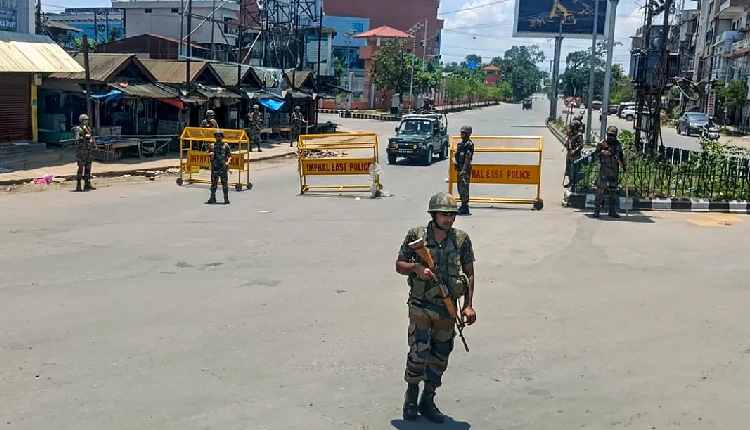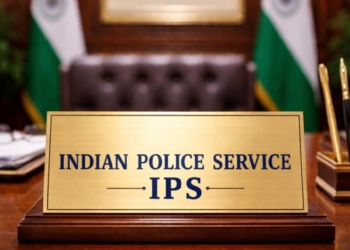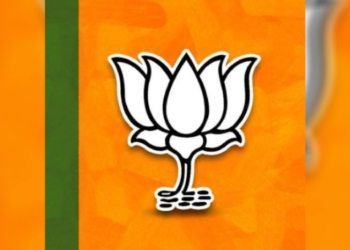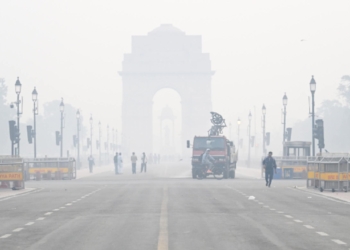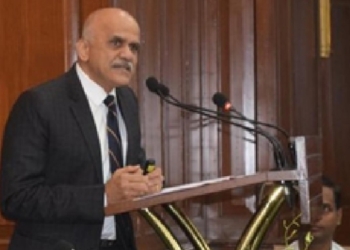Imphal/New Delhi: The recent wave of ethnic violence in Manipur erupted following a directive from the Manipur High Court asking the state government to consider granting Scheduled Tribe (ST) status to the Meitei community.
Such recognition would offer constitutional safeguards and expand the Meitei community’s access to various benefits, including reserved government seats.
Petitioners had argued that this community had once enjoyed the ST tag prior to the merger of Manipur with the Indian Union and therefore sought restoration of this status.
The Meitei demand was strongly opposed by the Kukis and Nagas.
On May 4, as the violence escalated, the Centre invoked Article 355 of the Constitution, empowering it to take necessary steps to protect the State against external aggression or internal disturbances.
The current ethnic clashes in Manipur are between two ethnic communities aimed at establishing their supremacy over the other.
Kuki-Meitei clashes in Manipur
Shortly after the court’s announcement, a protest rally was organised by the All-Tribal Students Union of Manipur (Kukis) on May 3. The protest rally turned violent leading to the deaths of at least 54 people.
Only the Kuki-Chin groups indulged in the violence after the rally. Notably, the indigenous Nagas were not involved.
Therefore, the root cause of the present ethnic clash is the problems specific to the Kuki-Chin groups.
Violence erupted when reports emerged of the Anglo-Kuki War Memorial Gate being set ablaze. In response, the Kukis retaliated by burning down several villages inhabited by Meitei communities in Churachandpur.
This, in turn, triggered Meitei reprisals, who reportedly set fire to several areas belonging to the Kuki community in the Imphal Valley, resulting in multiple casualties. While the protests may be seen as the immediate catalyst for the violence in Manipur, tensions between Indigenous communities had been simmering for years.
Manipur’s ethnic composition
Manipur is home to more than 30 ethnic communities that may be broadly clubbed under three main groups, viz., Meiteis, Kukis and Nagas. The Meitei are predominately Hindus (around 42 per cent).
A section of Meiteis called Meitei Pangals are Muslims. They constitute around 9 per cent of the population.
Kukis and Nagas are predominately Christians, constituting around 41 per cent of the population. Besides these there are also other minor local religious groups.
All three have historic animosity and have clashed with each other periodically over various issues including land & forest rights, reservation in government jobs, representation in power structures, etc.
The Meitei reside mainly in the valley and the Kukis & Nagas reside in the hills surrounding the valley.
Frequent clashes between these three communities have resulted in proliferation of armed militant factions among these ethnic groups.
In the 1990s, Nagas and Kukis fought violently over land resources in the hills, resulting in death of more than 300 people. The Kukis observe September 13 as a black day in remembrance of their massacre by Nagas in 1993.
Similarly, there has been periodic clashes between Meitei and Kuki communities with the armed groups from each community engaging in violent attacks and, attacking government property for allegedly siding with other.
The Meitei, argue that they are prohibited from purchasing land in the hilly regions, whereas the Kuki and other tribal communities are allowed to acquire land in the valley.
In addition, the problem is compounded by the influx of refugees from Myanmar following the military coup in 2021, particularly those from the Sagaing region who share close ties with the Kuki community, has heightened insecurity among the Meitei indigenous community.
The Ethnic Arguments
From a Kuki point of view, the current state government’s (with a meitei Chief Minister) plans to survey reserved forests in the hilly regions, ostensibly to curb opium cultivation, is a measure to evict them from their homes.
Traditionally, the Kukis have fought the government/ruling establishment in the Valley, which was always a Meitei majority one.
Before independence, Kukis had an armed rebellion against the King of Manipur and has continued their distrust even after monarchy was abolished and democratic government was established in independent India.
The Government of Manipur’s war on drugs and eviction of illegal encroachers is being projected as an attack on the Kukis.
A few Kukis were apprehended in connection with drug business, and the community’s leaders accused the government of targeting their tribe. The eviction drive has also affected many Meitei and Naga families.
For instance, the eviction of people from K. Songjang village in Churachandpur as per the Indian Forest Act 1927 and the Manipur Forest Rule 2021 was projected by some Kuki leaders as actions targeted against the interest of Kukis and whip up the sentiments of the people against the Government and the Meitei.
This is not a religious conflict!
Unfortunately, the conflict between the ethnic groups is being portrayed as a religious one by many on social media. This is not a Hindu- Christian conflict, it is a clash between two ethnic groups to assert their supremacy over the other.
The Nagas, who are the main Christian group in Manipur, remain unaffected by this conflict. There is no damage to their properties including churches. Only properties belonging to Kukis and Meitei are being specifically targeted.
Similarly, during this conflict, Meitei Muslims have on many occasions sided with the Hindu Meitei to hold rallies/to protect villages against Kukis perceived attacks.
Significantly, the residential premises of many Hindu leaders from Manipur including Rajkumar Ranjan Singh, Deputy Minister of External Affairs, have been burnt down in Imphal, by Meitei mobs.
The Meiteis allege that these leaders are siding with the Kukis. The present conflict is the exploitation of animosity between both two ethnic groups by few influential leaders/armed units from both sides who control the guns, drugs and politics. The identities of different ethnic communities have been weaponized to suit the agenda of these few.
Due to the periodic conflicts between these ethnic groups, the initial reaction from the state government has been lacklustre and ineffective. However, with the violence escalating control, the Central government took charge and increased deployment of central forces in the state. The active involvement of civilians in the violence especially in the form of armed mobs sets apart the present conflict from previous instances.
Earlier conflicts were restricted mainly to the armed militant groups and there was no active involvement of civilians. This is one of the reasons as to why state government lost control of the law-and-order situation. There is also a geo-political argument of China working with contacts in Burmese Junta to ferment trouble in the border state of Manipur.
There is a strong concern that China with the Junta would take advantage of this tense situation and use Manipur as the epicentre of anti-India operations, organising infiltration and arming insurgents in Manipur. They appear to have ensured continued provision of weapons, arms, and ammunitions to the militant groups of both communities and keep the fire of violence burning continuously in Manipur.
Central government steps in
Union Home Minister Amit Shah visited Manipur and stayed there for four days in early June. Subsequently, a judicial probe headed by a retired High Court judge to investigate violence and bring to justice the perpetrators was announced.
Further, a peace committee between members of different communities was created, besides calling both groups to return an estimated 1,420 weapons looted from local police since the start of the clashes.
India is also now going ahead with additional fencing on the Myanmar border.
As an extraordinary measure, the Central government changed the Head of the police force in Manipur state and brought in a senior official from a different state as Head of the police force to instil confidence among the communities.
Amid the chaos on the ground, armed groups continue to exploit the situation and there has been incidence of sporadic violence in multiple places in Imphal with armed mobs burning villages and government properties.
Reconciliation between both ethnic groups is the only way out to end this conflict. It is an undeniable fact that the ones most affected by this conflict in both the communities, are women and children. There has been some change on the ground in Manipur now with many communities in the state and the region holding peace and prayer meetings and religious leaders calling for peace.
There is also a need for the Central government to demonstrate in clear terms the impartial nature of their approach in resolving the decades old conflicts between these both groups.
(IANS)




